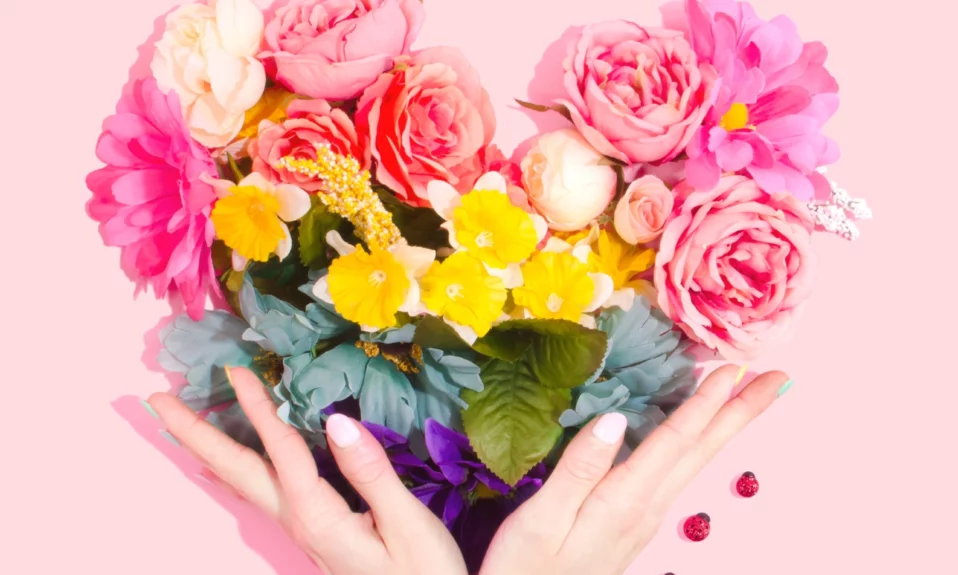
Color Space: If you are a designer, photographer, videographer and editor, you have heard this word a lot. In fact, understanding the color space is one of the most difficult and important artistic concepts. Today we are going to learn together, what is color space? What are its types? Why is it important and why should it be used? Voila, welcome to the most complete guide to color space!
- What is color space?
- What is gamut?
- What is the standard color space?
- What is the history of color space?
- How are the color spaces displayed?
- What is the color model?
- What are types of color models?
- What is the first color space?
- What is a color reference?
- What are types of color spaces?
- What are the commercial color spaces?
- Is it possible to convert color spaces?
- Why is color space important?
- What color space should be used?
- Why is it better and more economical to use sRGB?
- RAW or JPEG shooting? Which one is correct?
- What is an absolute color space?
- What is an arbitrary color space?
- Last word
What is color space?
Color space is a fixed range of colors that are represented by numerical values. In this way, these spaces can be interpreted and displayed on a visual page. For example, many displays are interpreted and processed through the RGB color space and finally displayed on a digital or analog image.
Actually, color space can be considered as a conceptual tool that is useful for understanding the color capabilities of a digital file or a specific device. In addition, when you want to reproduce the colors in another device, the color space will help you. In this way, the color space shows you the details of shadows, highlights and color saturation.
We can assign color spaces to physical color samples, such as PANTONE or structured with mathematical precision, such as the NCS, sRGB and Adobe RGB systems. With the name of color space, another concept called gamut is expressed.
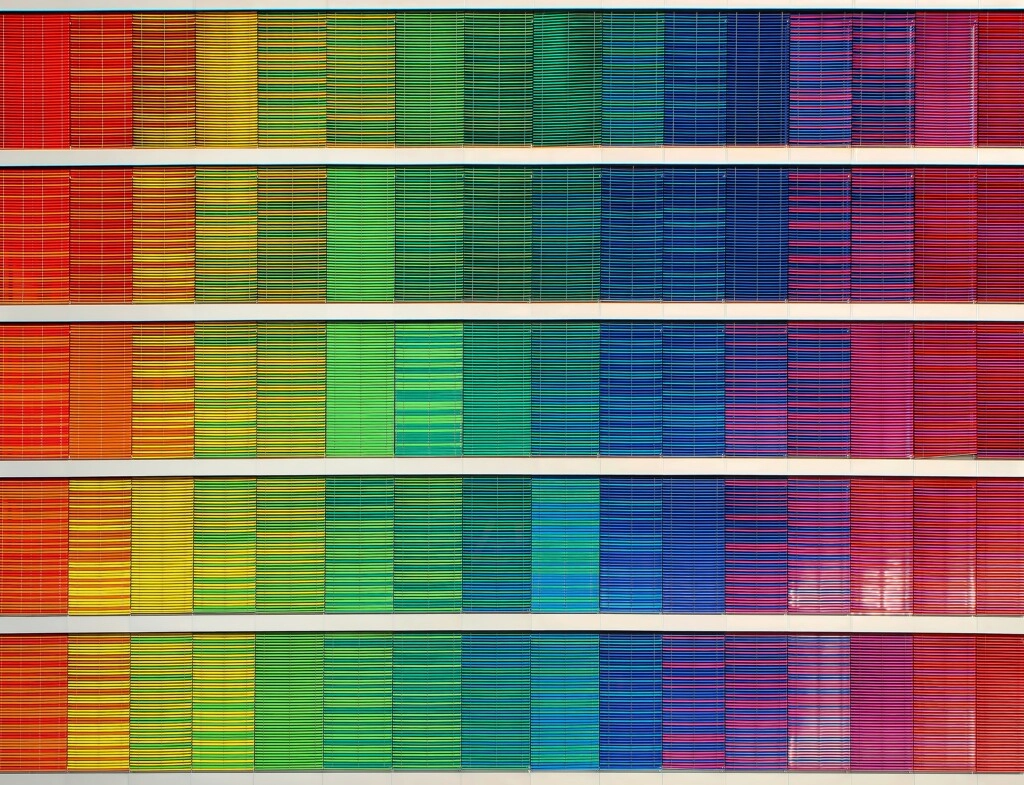
What is gamut?
Gamut is a subset of a color space that is represented in a 3D space by Hue, Saturation, and Brightness. In fact, gamut is part of a space that can be displayed and reproduced in a range.
There are different type of gamut, each of which is represented by a colored triangle. The wider the color triangle, the more colors people have to deal with. If you want to know more about color gamut, check out my previous article on this topic!
What is the standard color space?
The standard color space also includes a wide range of colors. But the difference with the regular model is that the standard color space is optimized for a wide range of displays. For example, we use these types of color spaces for computer screens, televisions, or projectors.
What is the history of color space?
In fact, in 1802, Thomas Young had a hypothesis. This hypothesis stated the existence of three types of photoreceptors in the human eye, each of which is sensitive to a specific light spectrum. After 48 years, in 1850, Hermann von Helmholtz extended Young’s hypothesis.
He came to the outcome that, according to the reaction that these three types of receptors show to the light wavelengths that hit the retina; We can divide them into three spectra. Short spectrum means blue, medium spectrum means green and long spectrum means red.
But later, a person named Hermann Grassmann developed the discussed topic in two stages. The first step was to express the hypothesis of vector space, which provided the possibility of displaying geometric concepts in several dimensions. The second step was to state the hypothesis of how to combine colors.

How are the color spaces displayed?
We can show most of the color spaces as a set of three. Like RGB, HSL, etc. We also included the CMYK color space in this category, and it is actually CMY, because it received black color by combining three other colors.
For the three-dimensional representation of these color spaces, we must place each component on one axis. For example, consider RGB (red, green and blue) color space; We place the red value on the X axis, the green value on the Y axis, and the blue value on the Z axis, all three axes being numbered from 0 to 255. This definition leads us to the color model.

What is the color model?
In fact, the color model is a base and pattern for the color space. Because the color model is an abstract mathematical model that specifies how colors are placed in numerical sets. For example, Adobe RGB and sRGB are two color spaces, both of which are based on the RGB model. For this reason, in most cases, the identification of a color space will also lead to the identification of the color model.
In other terms, a color model is a system that uses three primary colors to create a wider range of colors. Each color model creates a different color spectrum. For this reason, the entire color spectrum produced by any type of color model is called color space.
What are types of color models?
We should divide a color model into three parts: brightness, color and hue. Therefore, all color models below are based on this type. Let’s see together:
CMYK color model
The CMYK color model has the dominant colors cyan, magenta, yellow and black (of course, it gained black from the combination of the previous three colors). These colors are reducing colors because their combination leads to black. This color model is suitable for printing.
Also, CMYK colors are called reflective colors. Because these colors in printing specify we should use what ink on white paper so that the light reflected from that ink produces the desired color. In this way, it used a different type of CMYK color models for different type of printing.
RGB color model
The suitable color model for screens is the RGB color space, which includes red, green and blue colors. These colors are additive colors because their combination leads to white color. In addition, RGB colors are called radiant colors. Because the users see the color directly, not a reflection of it. Also, many color spaces use this to describe their chromaticity.
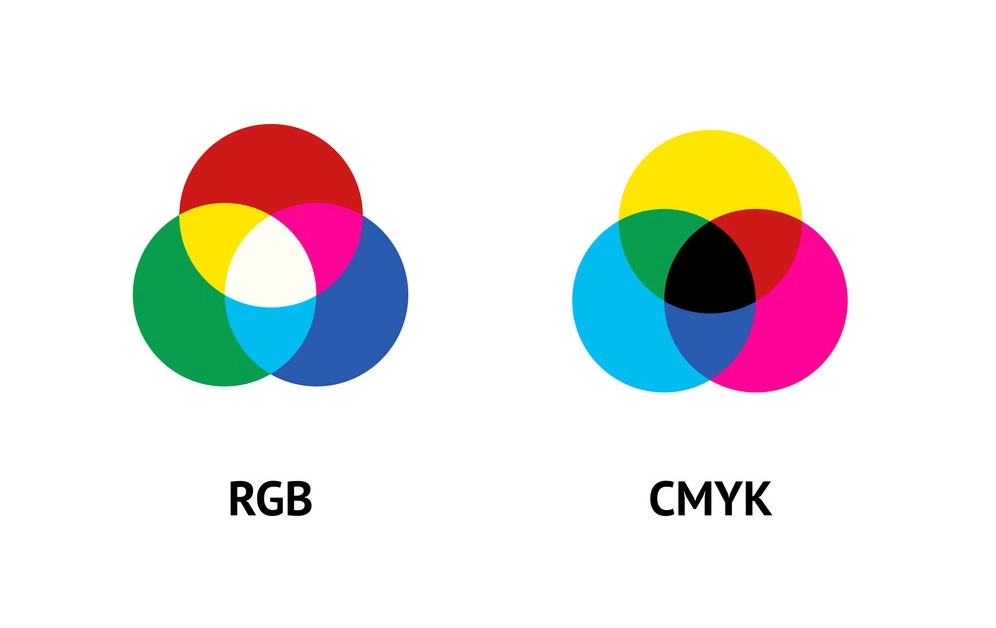
HSV color model
HSV (hue, saturation and value) color model is also known as HSB (hue, saturation and brightness). Artists and painters are the ones who use this color model the most. Because imagining and reaching color from this color model is easier than in the previous two cases.
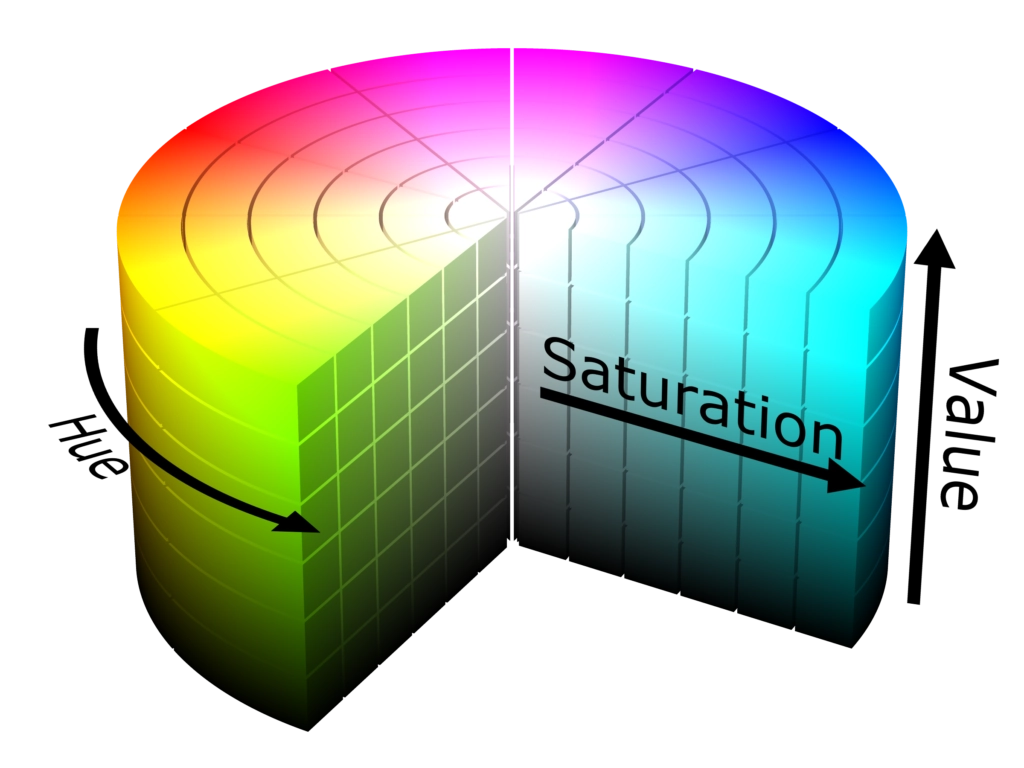
HSL color model
The HSL color model (hue, saturation and lightness) is known as HLS, HSI (hue, saturation and intensity) and HSD (Hue, Saturation, Darkness). This type is very similar to HSV. But the only difference between these two types is their brightness. The meaning of color brightness in HSV is the brightness of white color, but the color brightness in HSL is the brightness of light gray color. So, the HSL brightness is closer to the real world.

HWB color model
The HWB color model came to focus on some HSV problems. Its use is more intuitive for humans and its calculation speed is higher. Also, it includes Hue, Whiteness, and Blackness, which range from zero to 100. In fact, by choosing a primary color and combining it with white and/or black, we can produce the desired color. This color space is now available in the CSS level4 color module.

What is the first color space?
They made one of the first attempts to create a color space that matches the perception of color by the human eye in 1931. That year, the International Commission on Illumination or Commission Internationale de l’éclairage (CIE) drew up the CIE 1931 XYZ color space. In fact, we can say that this color space became the basis for most other color spaces.
Every other version of the CIE color space contained the same colors but assigned hue values in different ways. For example, comparing CIE 1931 and CIE 1976 color space shows that both may have the same colors. But if we draw a fixed point on these two graphs, we will definitely get two completely different colors. This issue expressed the concept of color reference.
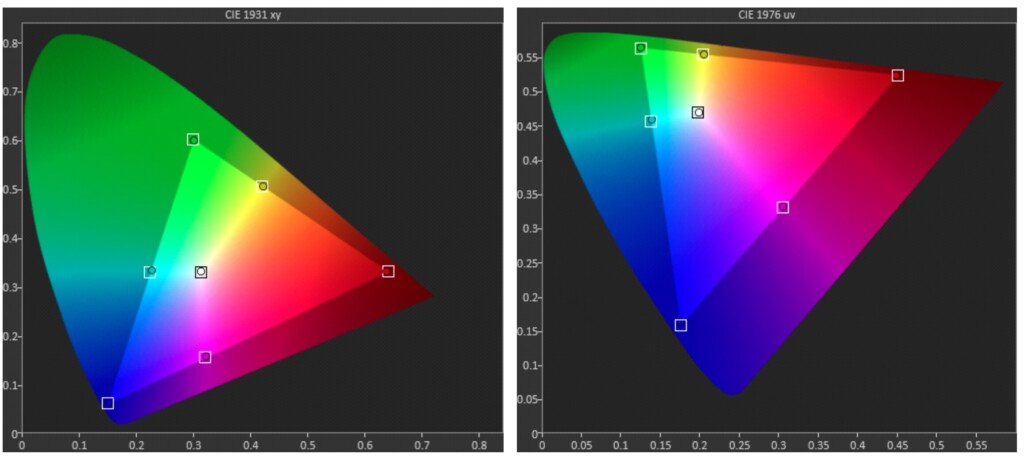
What is a color reference?
Color reference states that we can use spaces to determine how correctly or incorrectly they appear, based on what we know about other spaces.
What are types of color spaces?
There are countless color spaces, but you definitely know that among them there are also the most famous ones. In the following, I will introduce all of them:
sRGB color space
The standard red, green, blue color space or sRGB for short is one of the most popular color spaces. Therefore, this space is used for Windows, most web browsers, console and PC games. The advantage of using this space is that most devices support it.
About, 60% of normal monitors cover the sRGB space and about 45% of laptop screens cover this space. One of the problem of using this space is that it is small compared to other spaces. For this reason, it may lose a lot of color information when converting different spaces to sRGB.
Adobe RGB color space
In 1998, the Adobe system created this color space. This color space contains most of the colors achievable in CMYK color printers. In addition, this color space shows about 50% of the visible colors specified in the Lab color space. Further, Adobe RGB is improved over sRGB in the cyan-greens section.
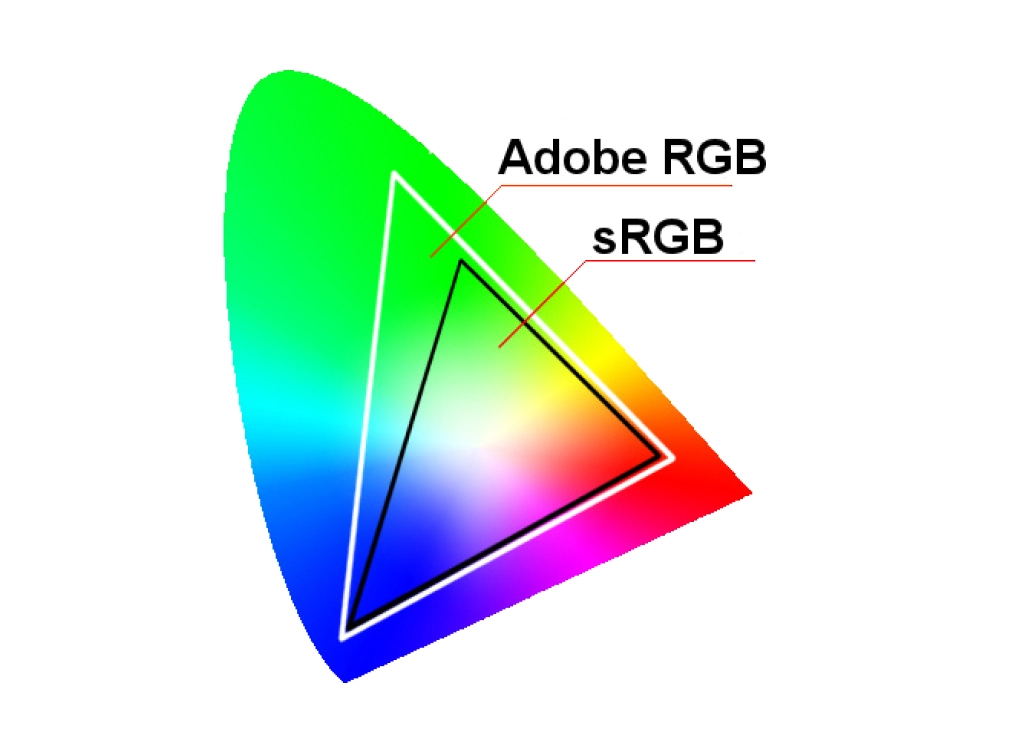
Adobe Wide Gamut RGB color space
This color space was an alternative to the sRGB color space. Also, this color space stores a wider range of color values. Also, wide gamut is a more extended example of Adobe RGB. For this reason, this color space covers about 77% of visible colors in the Lab.
Despite all this, this space has a negative point, which is that almost 8% of the colors that can be displayed in this space are imaginary colors. It cannot display this means that they do not exist and in any media at all. Therefore, the potential color accuracy is reduced due to the existence of such unnecessary colors.

Rec. 2100 color space
We actually use this color space standardized by ITU for HDR TVs. Also, this color space has the highest amount of brightness compared to its counterparts. In addition, the color space of Rec. 2100 uses a non-gamma transfer function and system colorimetry.
There are other types of this color space such as 1. Color space Rec. 601 which is used for SDTV. 2. Color space Rec. 709 which is used for HDTV. 3. Color space Rec. 2020 which is used for UHDTV.

ProPhoto RGB color space
Another name for this color space is ROMM RGB. This color space offers a very large range, even larger than the Wide Gamut RGB color space. After that, you can use images to get the output. This color space shows over than 90% of the probable surface colors in CIELAB.
Furthermore, this space covers exactly 100% of the probable surface colors available in the real world. The negative point of using this space is that nearly 13% of the colors that can be displayed in it are imaginary and are not displayed.
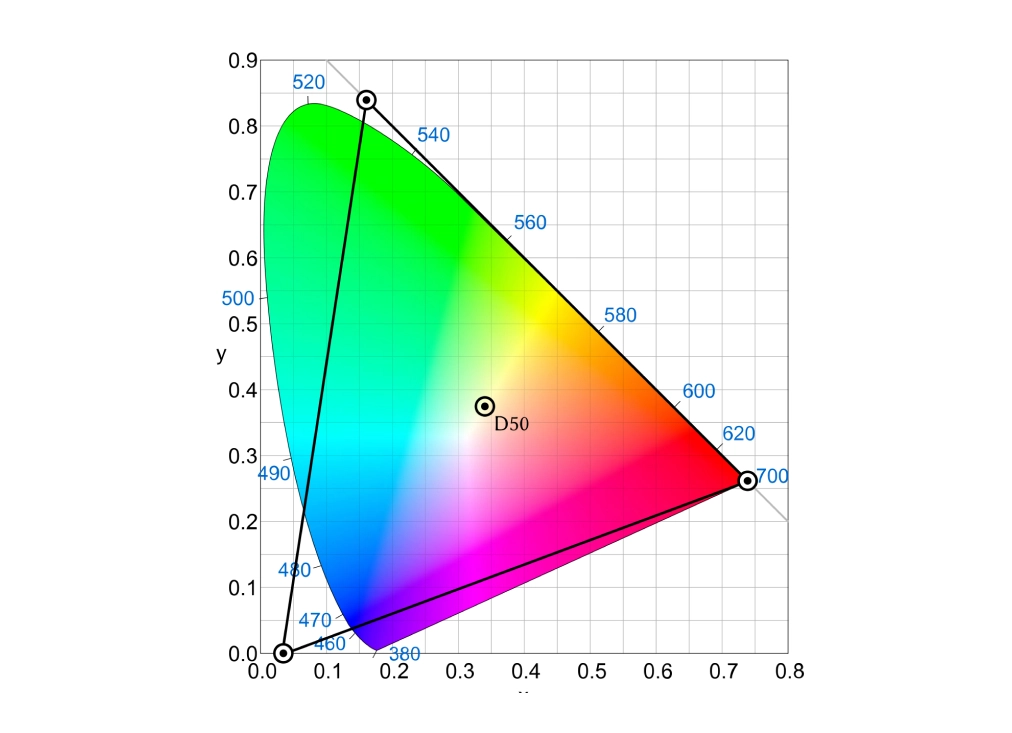
scRGB color space
Actually, this color space is a kind of wide gamut RGB color space. Also, this color space uses the same primary colors and black and white points as in the sRGB color space. The only difference is that this space allows coordinates below zero and greater than one. So, it coordinates from -0.5 to +7.5.

DCI-P3 color space
We can say that this color space is a set of colors used in the cinema industry and advanced PC monitors. Also, this color space can be used in some TVs and other displays. Its other names are P3 or Display P3. In short, the use of this color space makes the color of the images purer and more realistic and the quality of the movie’s HDR.
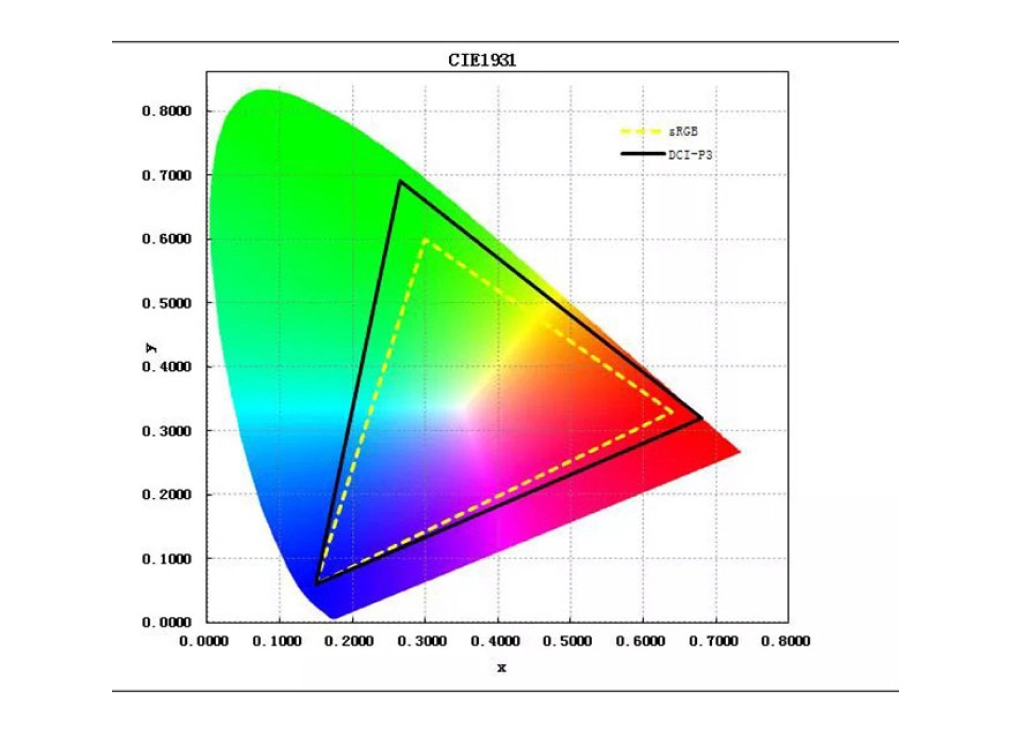
CIE 1931 XYZ color space
The first color space, which became the basis of almost all other color spaces, is CIE 1931 XYZ. I explained about this color space a little higher. To complete the explanation, in this color space, X is a combination of the three CIE RGB curves, Y is brightness, and Z is approximately equal to blue. Thus, for any given Y (luminance) value, the XZ plane contains all available colors at that luminance.

CIEUVW color space
In fact, we can say that this color space is comparable to the CIE 1931 XYZ. The only difference is that in this color space, it made measurements in a larger field of view than the CIE 1931 XYZ color space. This point causes the results to be slightly different. In addition, we know this color space as CIE 1964.
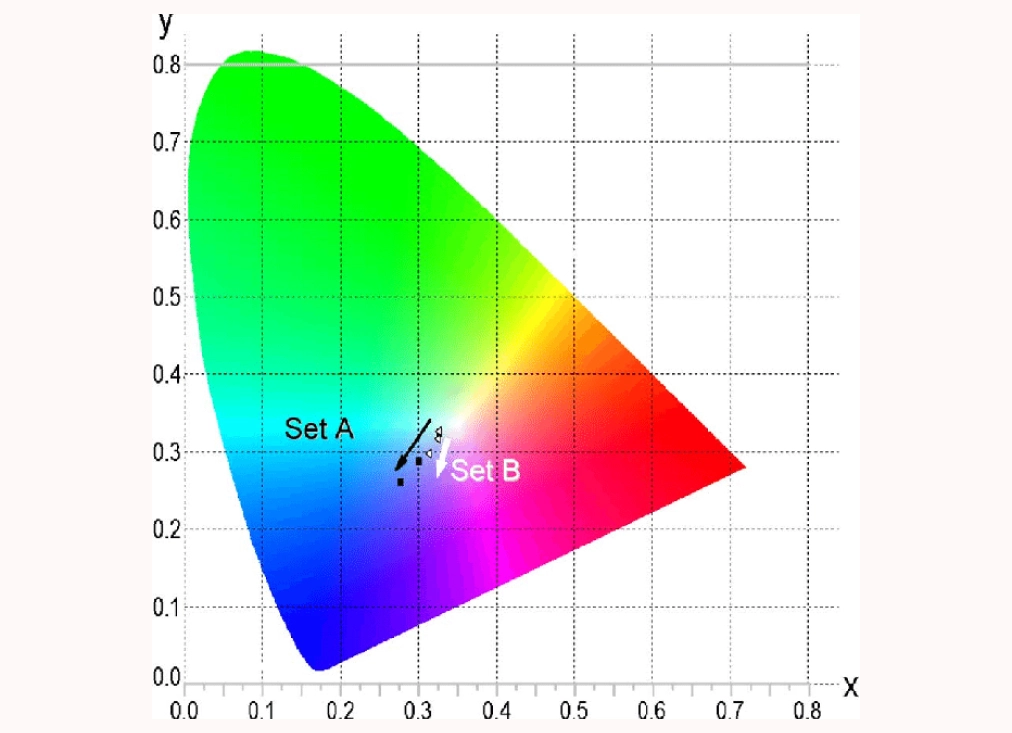
Uniform color spaces
We understood that human vision has three components, so human vision is a three-dimensional vision. Uniform color spaces are the type where one component is lightness, and two components are chroma. Uniform color spaces or shortened UCS are useful for a wide range of tasks.
In fact, it constructed these spaces in such a way that the same geometric distance at any point of the color space is equal to the same amount of perceived color difference. Therefore, we use these color spaces to calculate the color difference or choose a color that is compatible with visual vision.

CIELUV color space
This color space was actually a variation on the CIE 1931 XYZ color space. In this way, this color space became a space to display color differences as easily as possible. Also, this color space is useful for additive mixtures of lights. Because it has linear additive properties. However, human hue perception does not respect additional lights.
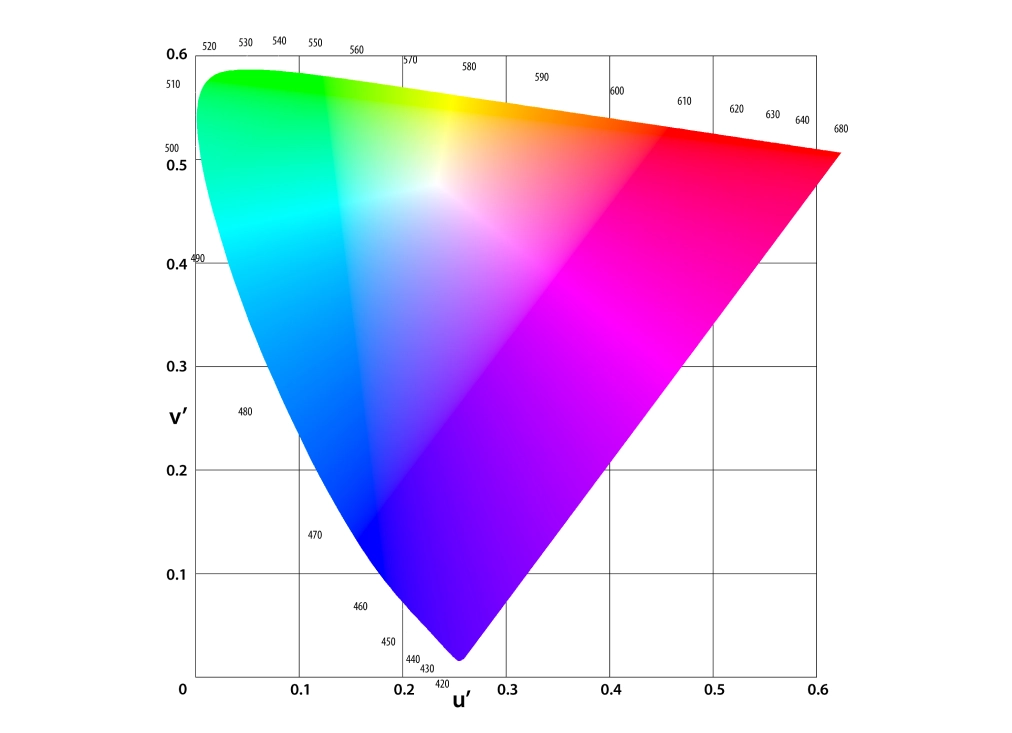
CIELAB color space
This color space has completely replaced the alternative related Lab color space, which is “Hunter Lab”. This type creates a space that is perceptually more linear than other spaces. What does it mean? So, the same change in color value should produce a change of approximately the same amount of visual significance. Pay attention that it does not use this color space for mixing lights, but for surface colors.
Besides, in this type, L shows the amount of lightness, A suggests the amount of color from green to red, and B displays the amount of color from blue to yellow. When the lightness is 100, the color is white and when the lightness is 0; the color is black.

HSLuv color space
The major task of this color space is to maintain the hue and brightness components of CIELUV LCH. In fact, it expands the colors to have the same range and also expresses the colors as a percentage.

IPT color space
This color space improves on the non-constant CIELAB color lines by using new data about color.
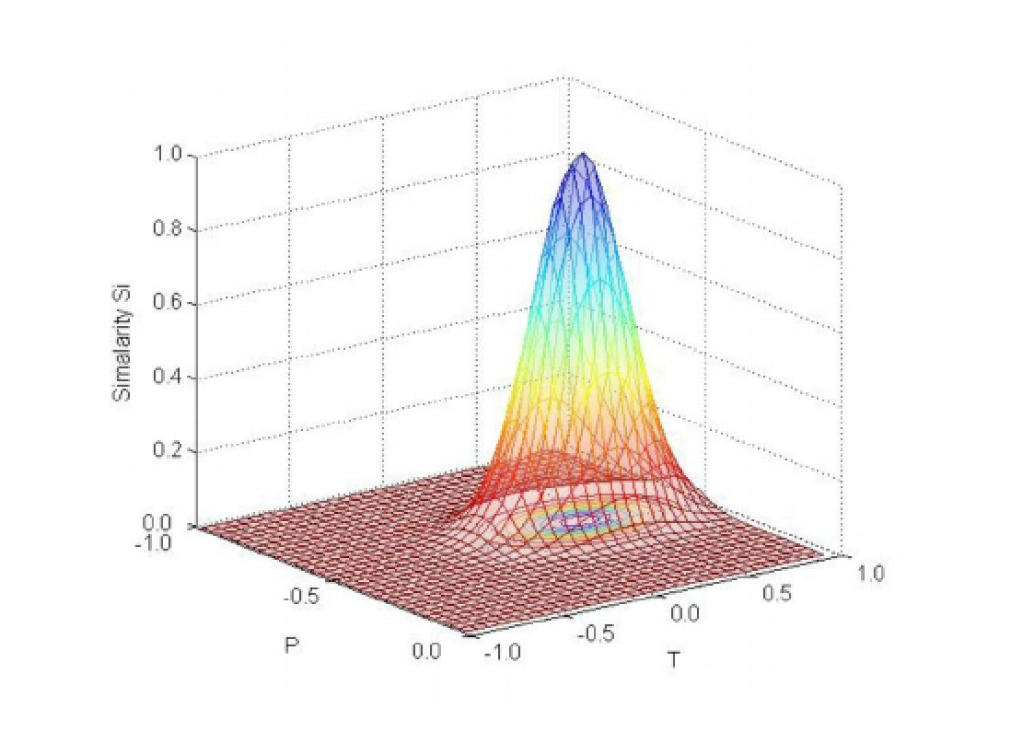
YUV color space
We mostly used this color space in analog color televisions. In fact, it derived this color space from RGB, which is why it is useful for minimizing capacity and compatibility with black and white TVs. In addition, the major advantage of this color space is the separation of brightness and color information in image processing.

YIQ color space
We previously used this color space in NTSC television broadcasts. The function of this color space is that it stores a luma value for brightness comparison and two chroma values that represent the blue and red values of the color.
Also, this color space is related to the YUV system used in most video capture systems and the PAL system, which is a common system for color coding in television broadcasting.

YPbPr color space
YPbPr color space is a version of YUV except that it is gradable. In addition, we usually use this type of color space in its digital form, which is called YCbCr. We used them in image and video compression, such as MPEG and JPEG.
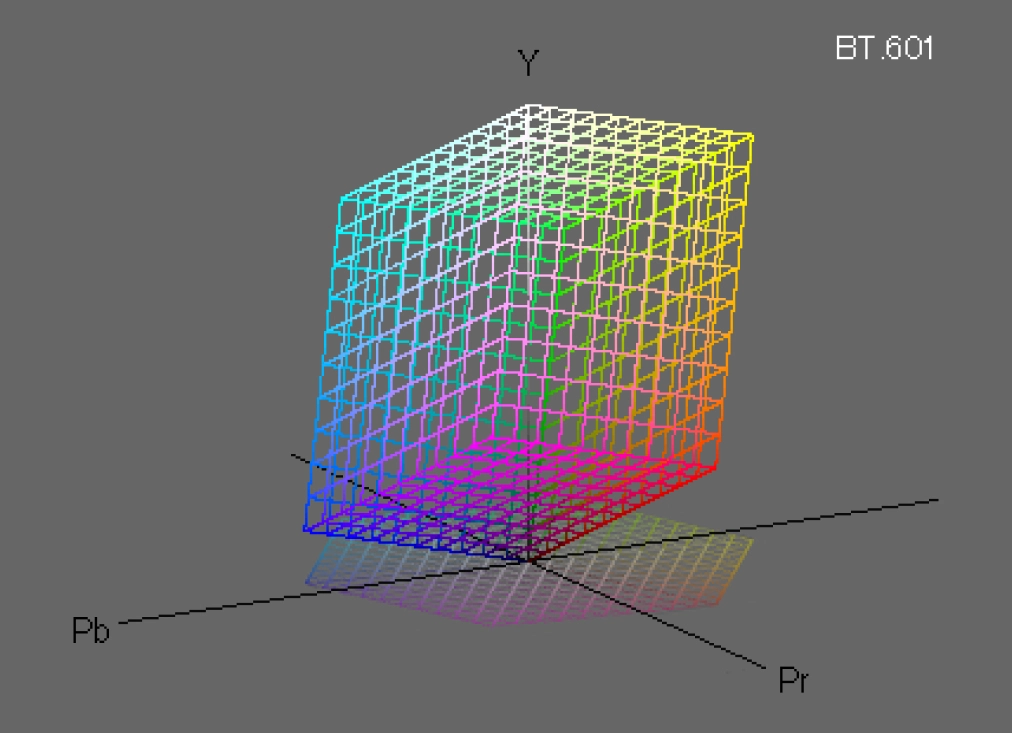
YCbCr color space
A scaled down and offset version of the YUV color space is the YCbCr color space. For videos and digital photos, this color space is used. Besides, this space includes Y, which means brightness, and two-color difference components, namely Cb (blue offset) and Cr (red offset). A variant of YCbCr is the YCCK color space. People use this space to compress the JPEG image.
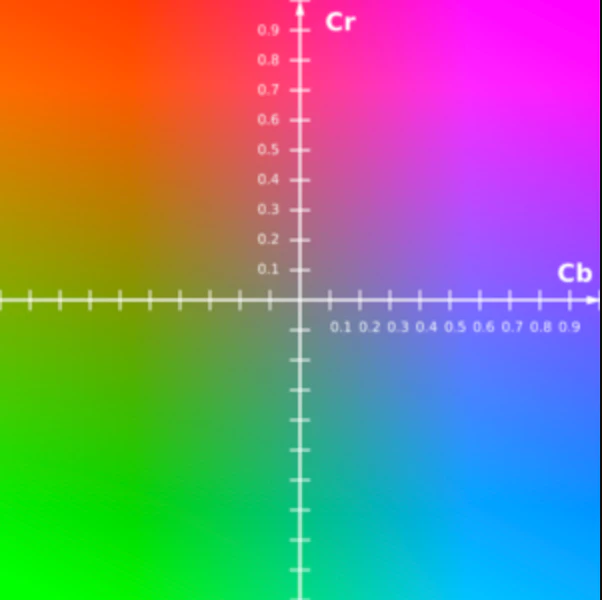
YCC color space
This color space is suitable for encoding CD image data. Also, this space includes Y, which means luminance, and two components of color difference or chrominance, namely C1, C2. So, we use this space to optimize color photographic materials as it provides a wider range of colors than can currently be displayed.

YCoCg color space
For more effectiveness in image compression, we use YCoCg color space. Also, this space includes Y, which means brightness, and two components of color difference, namely Co (offset orange) and Cg (offset green).

ICtCp color space
We used this color space for high dynamic range (HDR) and wide color gamut (WCG) of TV images. Also, this space is an alternative to non-constant lighting (NCL).
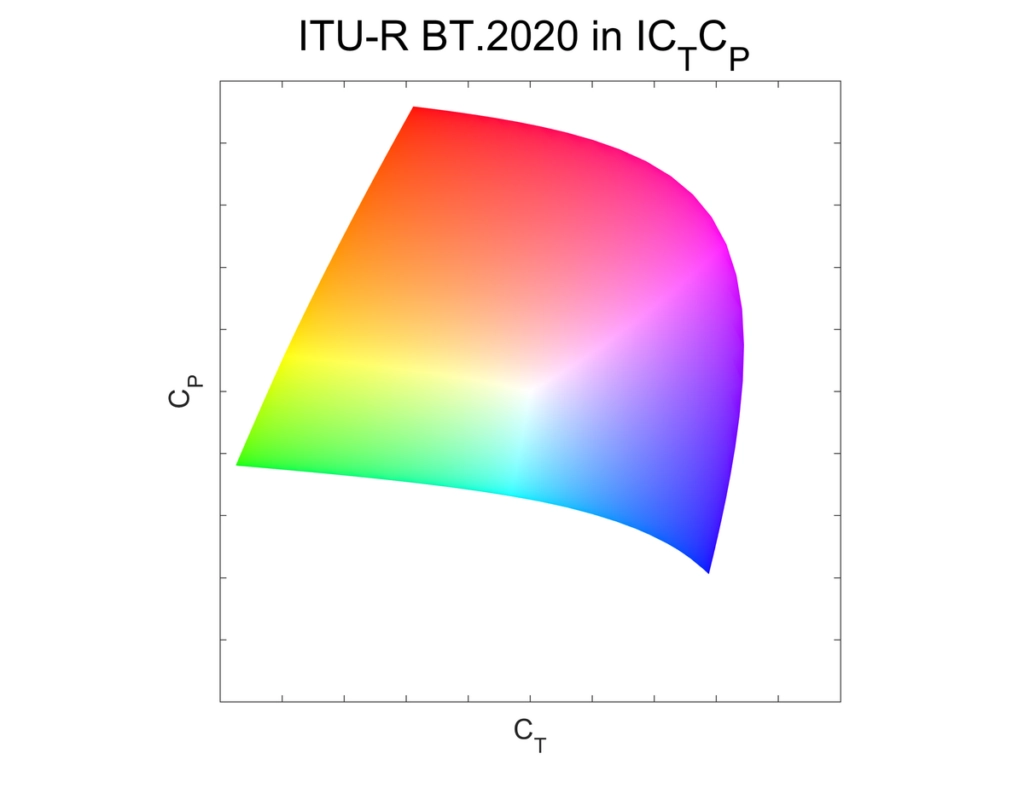
YDbDr color space
This YDbDr space is used in SECAM and PAL-N analog terrestrial color television broadcast standard. It is also very similar to YUV, and the color spaces associated with it include YIQ, YPbPr, and YCbCr.

xvYCC color space
We also known xvYCC color space as extended-gamut YCbCr. We use this color space in the video equipment of TV devices to support 1.8 times the size of the sRGB color space.

RG and RGK color space
The first computer colors included the RG color space for color film and RGK for early color printing. These color spaces show the color of light, such as green, yellow, red, etc., but it does not show how dark or light the colors become.

TSL color space
We used TSL color space in skin and face recognition.
RG Chromaticity color space
Also, we use this color space in the field of machine vision

NCol color space
We create Natural colors, or NCol to facilitate color selection in HTML systems. Because it is easier for the human eye to recognize and see natural colors. The way to show the values of colors in NCol is that they put the first letter of the color next to the number.
This number is actually the percentage of distance from the color. For example, R30 means that our desired color is 30% away from red.
LMS color space
This color space means long, medium and short. In fact, this perceptual color space is based on the response functions of the cones in the retina. It also used this space in psychological research.

What are the commercial color spaces?
In commercial fields, three color spaces are the most used. Commercial color spaces include Munsell, PMS (Pantone), and NCS.
Munsell color space
In fact, in colorimetry, Munsell is a color space that defines colors based on three color properties: hue (primary color), chroma (color intensity), and value (lightness). Besides, the United States Department of Agriculture (USDA) adopted this color space as the official color system for soil research in the 1930s.

NCS color space
Actually, the Natural Color System or NCS is a proprietary perceptual color model. In other words, this system is not entirely based on color composition but on the phenomenology of human perception. The creation of this color space was based on the hypothesis of color contrast of color vision. Therefore, this system helps you communicate colors in a way that everyone can understand.
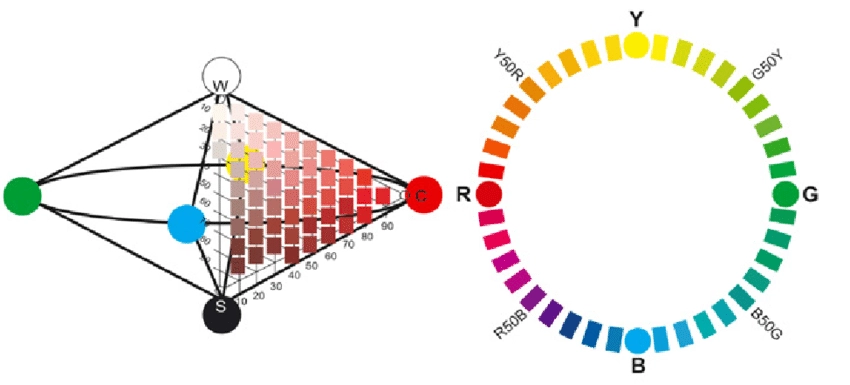
PMS (Pantone) color space
Pantone is actually a dedicated color space that is used in various industries, such as graphic design, fashion design and product design. In this way, the Pantone company prepared a set of colors that we use them for ease and reduction of color errors in printing. Also, PMS makes it possible to specify colors that cannot be CMYK-compliant in software.

HKS color space
The HKS color space includes 120 spot colors and 3520 tones for coated and uncoated papers. We can use HKS colors in any type of print publication to produce predictable colors, just like pantone colors. Also, HKS colors cannot reproduce some colors, such as bright orange or certain shades of blue, using the CMYK color space.
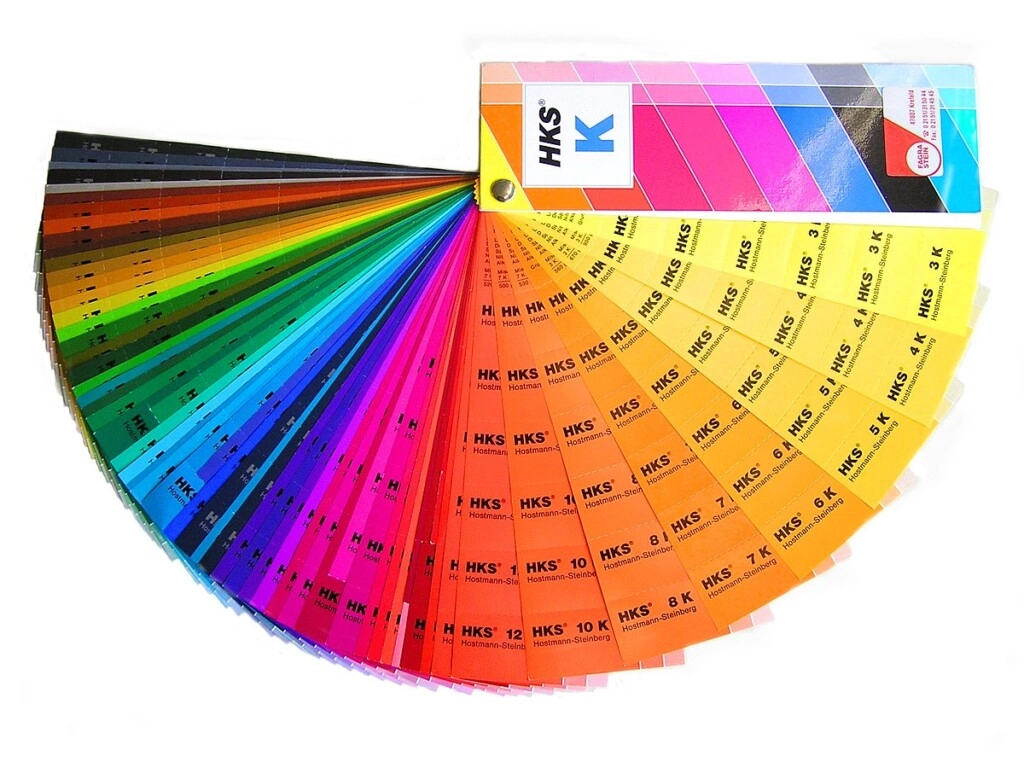
Is it possible to convert color spaces?
Converting one color space to another is like translating a text from one language to another. In this way, the meaning and concept does not change, only the way of expressing that meaning and concept changes. Each of you has probably done this a lot!
When you convert an image format to another format, you actually change its color space. The purpose of converting the color space is to convert the initial content to the content suitable for our last desire. For example, if we want the content that is suitable for the digital space to be printed, we need to convert its color space from RGB to CMYK. I am glad to show you the Dopely Color Converter tool.
Why is color space important?
The importance of color space is because it shows how to see images. In some cases, the color space is not applied correctly, thus causing a mess on the display.
Also, it is possible that they apply correctly a color space for one display, but the same space performs poorly on another display. This is why we need color spaces, and more importantly, a standard color space!
What color space should be used?
Well, it all depends on the workspace and tools available to you. Each color space will have a different effect on your work. So using the best color space will greatly help the output quality of your work.
Therefore, it can be said that the best color space to choose is the color space that is best for you. For this purpose, we are talking about three commonly used workspaces in which the right choice of color space is effective:
Choosing a color space in Lightroom and Photoshop
There are various color spaces in Lightroom and Photoshop. The smallest is sRGB, which is suitable for web use. Next is Adobe RGB, which is slightly larger than the previous one and is suitable for printing. Next is the ProPhoto RGB color space, which is the largest color space available, suitable for transferring photos to other image editing software.
Make sure that if you use the ProPhoto RGB color space, use 16 bits. In addition, there is another color space called P3 screen that exists in Apple devices. It is similar to Adobe RGB except that it loses some green and blue and goes towards red and orange.
So… what?
The best color space in Lightroom and Photoshop depends on the ultimate use of the image being edited. In short, if you want to publish your image on social media, blog or website, the best color space is sRGB.
On the other hand, if your image is going to be printed in a JPEG format or an 8-Bit image, you should choose the Adobe RGB color space.
Choosing a color space in photography
In photography, we see two types of color space; sRGB and Adobe RGB. We will find out which one is more suitable for photography. First, let’s take a look at the advantages and disadvantages of each type:
Advantages of using sRGB
By using this color space, you no longer have to buy AdobeRGB monitors.
The colors of your photos will remain the same, and the saturation will not change. Therefore, you can be sure that your images will not be converted, and their quality will remain the same.
Disadvantages of using sRGB
- If possible, you cannot convert sRGB photos to AdobeRGB.
- The range of sRGB is limited in terms of color tone variation. For this reason, it cannot provide vivid and accurate images and colors very well.
When to use sRGB?
Therefore, if you want to share photos on the computer, web or social networks, using this space is the best choice.
Advantages of using Adobe RGB
- Images with this color space are more vivid. Because it has a wide range of color tones. For this reason, the variety of colors is high.
- If they intend to print their photos, using this color space will not change the color quality, even a little.
- Most typically, you can convert Adobe RGB photos to sRGB if possible.
Disadvantages of using Adobe RGB
- To use this space, you need to use an Adobe RGB monitor, which can be very expensive.
- If you want to upload your photos to the web, you cannot use Adobe RGB because it makes the colors look unnatural.
When to use Adobe RGB?
Use this color space only when you want to print your photo. Also, if you have cooperated in an online photography contest as a photographer, it is better to use this color space. Because in many events they use Adobe RGB displays. In addition, if you have projects that need printing or your customers want their photos printed, use this space.

Why is it better and more economical to use sRGB?
If you are not a professional photographer or your clients do not want printed photos, you can use the sRGB color space. Because buying an Adobe RGB monitor or printer is very expensive. On the other hand, if an image is to be used only on the web, it is useless to put it in the Adobe RGB color space, because it does not display some of the colors and the colors may change.
RAW or JPEG shooting? Which one is correct?
Photographing in JPEG format means that you probably used the sRGB color space. Most commercial printers use the sRGB color space because of its lower cost.
Shooting in RAW format is much more suitable. The reason is that you can choose which color space to use in the processing stage. So it enables you to choose more easily.

What is an absolute color space?
In fact, in color science, we defined the absolute color space as the color space in which the colors have no ambiguity. Therefore, colors can be interpreted in that space without referring to external factors. For example, sRGB is an example of absolute rank space.
It is also possible to convert a non-absolute color space into an absolute one. So, it is enough to convert the non-absolute color space relationship with absolute color values. For example, if the values of red, green, and blue colors are precisely specified in a display, then the RGB value can be absolute.

What is an arbitrary color space?
It created most color spaces for a specific purpose, so we can say that color spaces are consensual. For example, if there is a P next to RGB (for example, to determine the value of purple color), you will have a new color space. If others use this color space, you created. So you have done your job and you are successful in creating a colorful space.
One of the popular custom color spaces is Pantone. In this color space, names and numbers are used to specify colors. This is the reason that the Pantone company chooses special colors as the color of the year every year.

Last word
After understanding all these issues, we can say that the only suitable and ideal color space for you depends on you and your goal. After defining your goal, it becomes easier to choose a color space that is more suitable for your work.
What color space do you usually use? Share your experiences with me!




